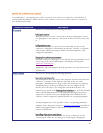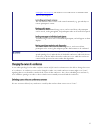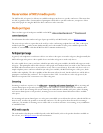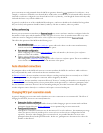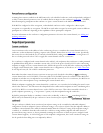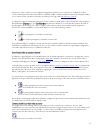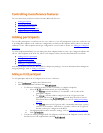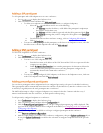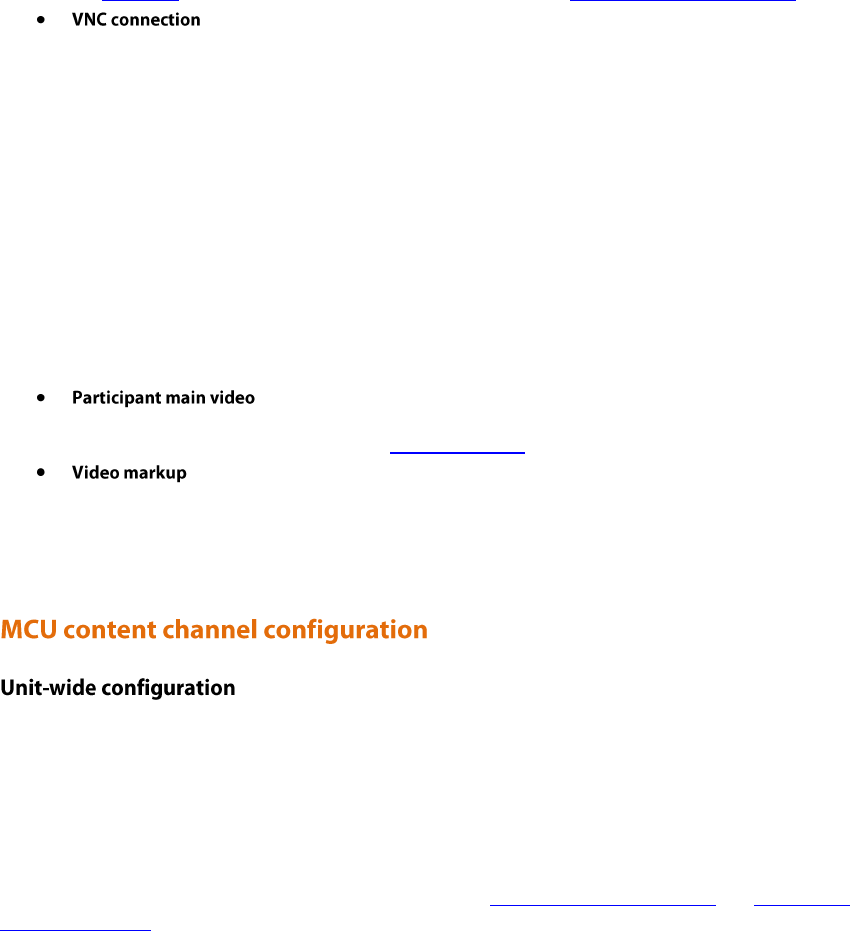
43
content channel) alongside the main video channel in a video-conferencing call that uses SIP. A SIP
conference participant opens a BFCP channel to the MCU and contributes a video stream, such as that
supplied by a second camera or an attached PC.
Because there can be at most one content channel source, the SIP endpoint needs to make a request to the
MCU, and have that request accepted, before actual content channel contribution can start. If the
conference already has an active content channel (for example, another endpoint is contributing content
video), the new request will be rejected by the MCU - it will be necessary to wait for the active contributor
to cease sending content video before the new endpoint is able to start. Note that the MCU does not send
the content channel to SIP endpoints as a separate video channel, but can show the content channel within a
normal view pane in the same way as it displays other conference participants. This ability is controlled by
the unit-wide Display content in normal video channel setting (see Configuring content settings).
A VNC connection is one where the MCU has made a connection to a remote device (normally a desktop
PC) and is receiving a video stream from that device - this is typically used for including a slide-based
presentation in a conference.
By default, if a conference is configured with content channel support and a VNC "participant" is added to
that conference, the MCU will attempt to use the VNC video as the content channel. This is normally the
desired behavior; however, there are a couple of caveats:
o If there is a video conferencing endpoint actively contributing content video then it will not be
possible to immediately switch over to using the VNC video instead - the switch over will occur
when the participant closes its content channel.
o With more than one active VNC connection in a conference, the first will be used as the content
channel source, and subsequent connections will be shown in main video layout panes, just as if the
conference had no content channel facility. If the currently active VNC connection is either
disconnected or its use as the content channel disabled, another VNC video stream will start to be
used as the content channel.
It is also possible for the MCU to use a endpoint's main video channel as the conference's content channel.
This has the same caveats as the use of a VNC connection for the content channel, as described above.
Whichever of the content channel sources mentioned above is active, the MCU provides the facility for users
to add markup to the video channel. This markup consists of an additional video overlay on to which graphics
may be drawn and text added - content channel viewers see the content channel source video plus this
overlay. The overlay can be cleared later leaving the source video unaltered.
At the unit-wide level, the MCU can be configured to disallow the use of conference content channels completely. If
the content channel facility is enabled, the MCU can be separately configured not to allow textual or graphical
markup of the content, and whether to make text chat visible to connected endpoints.
You can choose to enable encryption on the MCU. When encryption is used, the content channel will be encrypted.
For more information on these configuration parameters, see Configuring content settings and Configuring
encryption settings.




